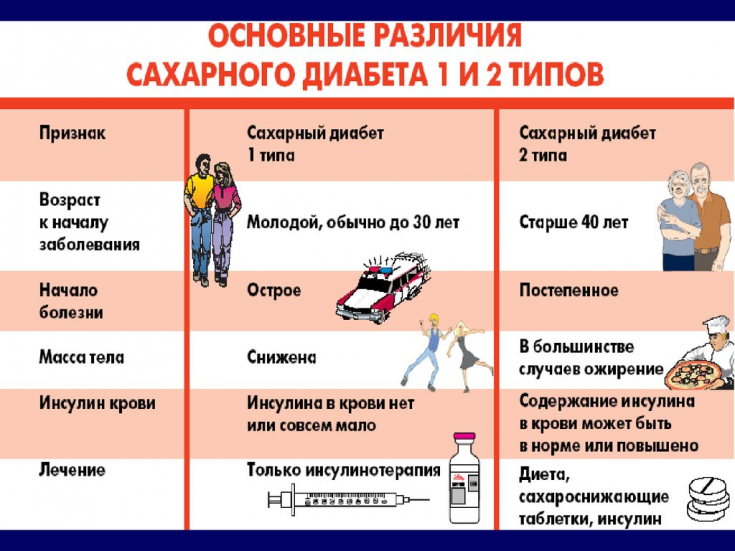Many scientists and doctors call diabetes an epidemic of the 21st century. Despite the many treatment regimens, the incidence rate for this nosology continues to grow.
A groundbreaking study is currently underway on the application of a gene therapy for streptozotocin-induced diabetes in mice, which is based on vector construction technology. The results of this work may reveal to the world the genetic influence on this disease, as everyone knows that diabetes mellitus has a hereditary tendency.
In the article estet-portal.com you will be the first to know about the latest discoveries in the field of diabetes treatment.
Research on genomic correction in diabetes induction
Currently, the effectiveness of cryopreserved human umbilical cord blood nucleated cells, cryopreserved multipotent mesenchymal stromal cells isolated from the human placenta, and cryopreserved human amniotic membrane in diabetic peripheral neuropathy, peripheral arterial disease (often arising as a consequence of angiopathy with persistently high glucose level).
Follow us on Instagram!
Stem cells have been isolated and used in medicine for over 40 years. However, the number of clinical trials investigating the effect of mesenchymal stem cells on chronic wound healing is limited - about 50.
The test preparation is a suspension of placental mesenchymal stromal cells frozen at -196°; C. It exhibits regenerative effects in the presence of diabetic peripheral neuropathy, peripheral arterial disease and trophic ulcers of the lower extremities.

As a result, ulcers in diabetic lesions quickly heal or their area decreases, indicators of regional segmental pressure and capillary blood flow reserve increase by 80-100%, neoangiogenesis increases, local inflammation decreases.
The drug is safe, it has been carefully tested for the presence of pathogens of ToRCH infections (Toxoplasma gondii, cytomegalovirus, herpes simplex virus types 1 and 2), syphilis, HIV-1 and HIV-2, hepatitis B and C, mycoplasma .
This study is being conducted in collaboration with colleagues from leading centers in the United States regarding clinical and experimental studies on the treatment of patients with diabetic foot syndrome. If the results of scientific work are positive, it will be an important step forward in the treatment of foot damage due to diabetes.
Metabolic surgery for obesity as a risk factor for diabetes
In 2006 The American Association of Endocrinologists has designated metabolic surgery as the first line of treatment for type 2 diabetic patients with grade III obesity. And after 3 years, the American Diabetes Association (ADA) included bariatric (metabolic) surgery in the treatment of type 2 diabetes.
In 2018, the consensus of the ADA and the European Association for the Study of Diabetes (EASD) remains one of the options for treating type 2 diabetes in obese patients.
National Institutes of Health Indications for Surgical Treatment of Obesity:
1) morbid obesity ((BMI) ≥40 kg/m2);
2) BMI ≥35 kg / m2 in the presence of comorbid conditions such as metabolic disorders, severe joint pathology, severe psychological problems associated with obesity, and diabetes mellitus.
According to the ADA and EASD report, metabolic surgery is the recommended treatment option for adults with type 2 diabetes mellitus with a BMI ≥40 kg/m2 and a BMI of 35-39.9 kg/m2, do not achieve sustained weight loss, and improve the course of comorbidities with the use of available options for non-surgical therapy.
Metformin leads to vitamin B12 deficiency: why screening is necessary
Peculiarities of the course and treatment of diabetes mellitus in older people
Laboratory and social differences in the clinical picture of the disease in this group of patients. The clinical ones include the following: asymptomatic course (there are no specific complaints about polyuria, thirst, dry mouth), the predominance of non-specific manifestations (weakness, memory impairment, etc.), clinically pronounced micro- and macroangiopathies already at the time of detection of diabetes mellitus; combined multiple organ pathology.
Is it possible to achieve remission of type 2 diabetes with weight loss
Laboratory differences include: no increase in fasting glucose levels in some patients, isolated postprandial hyperglycemia predominates in the structure, an increase in the level of the renal threshold for glucose with age (urinary glucose occurs against the background of plasma glucose concentration > 12-13 mmol / l).

Social features are the isolation of patients, limited financial opportunities, weakening of mental functions.
The target level of glycated hemoglobin (HbA1c) in older patients who are relatively healthy and with preserved cognitive function is < 7.5%, for patients in more severe condition, with cognitive impairment - < 8-8, 5% (ADA Guidelines, 2019).
Treatment includes diet, appropriate physical activity, oral hypoglycemic agents, glucagon-like peptide-1 (GLP-1) receptor agonists, insulin therapy, combination therapy.
Statins and diabetes risk: is there a link
In drug therapy, dipeptidyl peptidase-4 (DPP-4) inhibitors should be preferred as safe agents for the development of hypoglycemia and given the possibility of use in any stage of chronic kidney disease. Sulfonylureas should be used with caution in elderly patients due to the increased risk of hypoglycemia with age: treatment is started at doses that are 50% lower than for young patients; increase the dose of sulfonylurea drugs more slowly.
Insulin therapy starts with basal or combined insulins. Intensified treatment regimens are possible only in patients with preserved cognitive functions and the ability to self-monitor glycemic levels.
Thus, in connection with the development of revolutionary methods of treating diabetes mellitus, this may soon bring this nosology into the category of completely curable.
Diabetic Foot: Treatment of Ulcers with Nitric Oxide Dressings







Add a comment